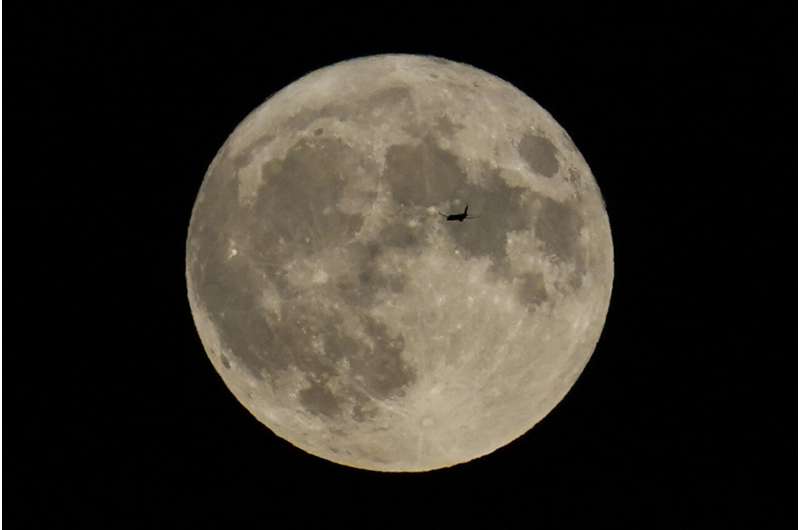This article has been reviewed according to Science X's editorial process and policies. Editors have highlighted the following attributes while ensuring the content's credibility:
fact-checked
peer-reviewed publication
reputable news agency
proofread
Scientists have confirmed a cave on the moon that could be used to shelter future explorers

Scientists have confirmed a cave on the moon, not far from where Neil Armstrong and Buzz Aldrin landed 55 years ago, and suspect there are hundreds more that could house future astronauts.
An Italian-led team reported Monday that there's evidence for a sizable cave accessible from the deepest known pit on the moon. It's located at the Sea of Tranquility, just 250 miles (400 kilometers) from Apollo 11's landing site.
The pit, like the more than 200 others discovered up there, was created by the collapse of a lava tube.
Researchers analyzed radar measurements by NASA's Lunar Reconnaissance Orbiter, and compared the results with lava tubes on Earth. Their findings appeared in the journal Nature Astronomy.
The radar data reveals only the initial part of the underground cavity, according to the scientists. They estimate it's at least 130 feet (40 meters) wide and tens of yards (meters) long, probably more.
"Lunar caves have remained a mystery for over 50 years. So it was exciting to be able to finally prove the existence of one," Leonardo Carrer and Lorenzo Bruzzone of the University of Trento, wrote in an email.
Most of the pits seem to be located in the moon's ancient lava plains, according to the scientists. There also could be some at the moon's south pole, the planned location of NASA's astronaut landings later this decade. Permanently shadowed craters there are believed to hold frozen water that could provide drinking water and rocket fuel.
During NASA's Apollo program, 12 astronauts landed on the moon, beginning with Armstrong and Aldrin on July 20, 1969.
The findings suggest there could be hundreds of pits on the moon and thousands of lava tubes. Such places could serve as a natural shelter for astronauts, protecting them from cosmic rays and solar radiation as well as from micrometeorite strikes. Building habitats from scratch would be more time-consuming and challenging, even when factoring in the potential need of reinforcing the cave walls to prevent a collapse, the team said.
Rocks and other material inside these caves—unaltered by the harsh surface conditions over the eons—also can help scientists better understand how the moon evolved, especially involving its volcanic activity
More information: Leonardo Carrer, Radar evidence of an accessible cave conduit on the Moon below the Mare Tranquillitatis pit, Nature Astronomy (2024). DOI: 10.1038/s41550-024-02302-y. www.nature.com/articles/s41550-024-02302-y
Journal information: Nature Astronomy
© 2024 The Associated Press. All rights reserved. This material may not be published, broadcast, rewritten or redistributed without permission.





















